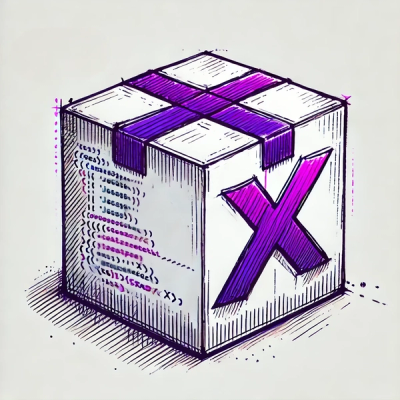
Security News
pnpm 10.0.0 Blocks Lifecycle Scripts by Default
pnpm 10 blocks lifecycle scripts by default to improve security, addressing supply chain attack risks but sparking debate over compatibility and workflow changes.
superfly-timeline
Advanced tools
A collection of rules as well as a resolver for placing objects on a virtual timeline.
The SuperFly-Timeline library resolves a Timeline, ie calculates absolute times of the Timeline-objects, based on their relationships expressed in time-based logic expressions.
Timeline-objects can be placed on a Timeline and their position on that timeline can be expressed as either absolute times ({start: 100, end: 150}) or relative to other objects ({start: "#otherObjId.start", duration: 10}).
Timeline-objects can be placed on layers, where only one object will become active at a time.
Timeline-objects can have classes, which can be referenced by other objects.
Timeline-objects can have child objects, which are capped inside of their parents.
Note: These examples are simplified and assumes that the time-base is in seconds, however you can choose whatever timebase you want in your implementation.
{start: "#A.start + 10"}:
Will start 10 seconds after A started. Continues indefinitely.{start: "(#A.start + #A.end) / 2", duration: 8}:
Will start halvway into A. Plays for 8 seconds.{while: "#A"}:
Will play whenever A plays.{while: "#A - 2"}:
Will play whenever A plays, and starts 2 seconds before A.{while: ".mainOutput"}:
Will play whenever anything with the class "mainOutput" plays.{while: "!.mainOutput"}:
Will play whenever there's not nothing playing with the class.SuperFly-Timeline is mainly used in the Sofie TV News Studio Automation System and SuperConductor.
$ npm install --save superfly-timeline
Can be run in the browser using browserify or the like.
import {
TimelineObject,
ResolveOptions,
resolveTimeline,
getResolvedState,
ResolvedTimelineObjectInstance,
TimelineState,
} from 'superfly-timeline'
// The input to the timeline is an array of objects:
const myTimeline: TimelineObject[] = [
{
// This object represents a video, starting at time "10" and ending at time "100"
id: 'video0',
layer: 'videoPlayer',
enable: {
start: 10,
end: 100,
},
content: {},
classes: ['video'],
},
{
// This object defines a graphic template, to be overlaid on the video:
id: 'graphic0',
layer: 'gfxOverlay',
enable: {
start: '#video0.start + 5', // 5 seconds after video0 starts
duration: 8,
},
content: {},
},
// This object defines a graphic template, to played just before the video ends:
{
id: 'graphic1',
layer: 'gfxOverlay',
enable: {
start: '#video0.end - 2', // 2 seconds before video0 ends
duration: 5,
},
content: {},
},
// A background video loop, to play while no video is playing:
{
id: 'videoBGLoop',
layer: 'videoPlayer',
enable: {
while: '!.video', // When nothing with the class "video" is playing
},
content: {},
},
]
// When we have a new timeline, the first thing to do is to "resolve" it.
// This calculates all timings of the objects in the timeline.
const options: ResolveOptions = {
time: 0,
}
const resolvedTimeline = resolveTimeline(myTimeline, options)
function logState(state: TimelineState) {
console.log(
`At the time ${state.time}, the active objects are ${Object.entries<ResolvedTimelineObjectInstance>(state.layers)
.map(([l, o]) => `"${o.id}" at layer "${l}"`)
.join(', ')}`
)
}
// Check the state at time 15:
logState(getResolvedState(resolvedTimeline, 15))
// Check the state at time 50:
const state = getResolvedState(resolvedTimeline, 50)
logState(state)
// Check the next event to happen after time 50:
const nextEvent = state.nextEvents[0]
console.log(`After the time ${state.time}, the next event to happen will be at time ${nextEvent.time}."`)
console.log(`The next event is related to the object "${nextEvent.objId}"`)
// Check the state at time 99:
logState(getResolvedState(resolvedTimeline, 99))
// Check the state at time 200:
logState(getResolvedState(resolvedTimeline, 200))
console.log(
`The object "videoBGLoop" will play at [${resolvedTimeline.objects['videoBGLoop'].resolved.instances
.map((instance) => `${instance.start} to ${instance.end === null ? 'infinity' : instance.end}`)
.join(', ')}]`
)
// Console output:
// At the time 15, the active objects are "video0" at layer "videoPlayer", "graphic0" at layer "gfxOverlay"
// At the time 50, the active objects are "video0" at layer "videoPlayer"
// After the time 50, the next event to happen will be at time 98."
// The next event is related to the object "graphic1"
// At the time 99, the active objects are "video0" at layer "videoPlayer", "graphic1" at layer "gfxOverlay"
// At the time 200, the active objects are "videoBGLoop" at layer "videoPlayer"
// The object "videoBGLoop" will play at [0 to 10, 100 to infinity]
The logic is set by setting properties in the .enable property.
| Property | Description |
|---|---|
.start | The start time of the object. (cannot be combined with .while) |
.end | The end time of the object (cannot be combined with .while or .duration). |
.while | Enables the object WHILE expression is true (ie sets both the start and end). (cannot be combined with .start, .end or .duration ) |
.duration | The duration of an object |
.repeating | Makes the object repeat with given interval |
Note: If neither .end, .duration, or .while is set, the object will continue indefinitely.
Examples
{
enable: {
start: '#abc.end + 5', // Start 5 seconds after #abc ends
duration: '#abc.duration' // Have the same duration as #abc
}
}
{
enable: {
while: '#abc', // Enable while #abc is enabled
}
}
All objects will be on a layer in the resolved state. There are a few rules:
.priority will win.Example
{
id: 'A',
layer: 'L1',
enable: { start: 10, end: 100 },
content: {},
},
{
id: 'B',
layer: 'L1',
enable: { start: 50, duration: 10 },
content: {},
}
// This will cause the timeline to be:
// A on layer L1 for 10 - 50
// B on layer L1 for 50 - 60
// A on layer L1 for 60 - 100
| Reference | Description |
|---|---|
#objId | Reference to the object that has the specified .id |
.className | Reference to any object that has the class-name in its .classes |
$layerName | Reference to any object that is on the specified layer (.layer) |
The references listed above can be modified:
| Example | Description |
|---|---|
#objId.start | Refer to the start of the object |
#objId.end | Refer to the end of the object |
#objId.duration | Refer to the duration of the object |
The references can be combined using arithmetic (+ - \* / % ( )) and boolean operators (& | ! )
Examples
{
// Start halfway in:
enable: {
start: '#abc.start + #abc.duration / 2'
}
}
{ // Enable while #sun and #moon, but not #jupiter:
enable: { while: '#sun & #moon & !#jupiter', }
}
It is also possible to add keyframes to an object. A keyframe follows the same logic as other timeline-objects and can reference (and be referenced) as such.
When the keyframe is active, its content is deeply applied onto the parents .content in the ResolvedState.
Example
const tl = {
id: 'myObj',
layer: 'L1',
enable: {
start: 10,
end: 100,
},
content: {
opacity: 100,
},
keyframes: [
{
id: 'kf0',
enable: {
start: 5, // relative to parent, so will start at 15
duration: 10,
},
content: {
opacity: 0,
},
},
],
}
// This will cause the object to
// * Be active at 10 - 100
// * Have opacity = 100 at 10 - 15
// * Have opacity = 0 at 15 - 25
// * Have opacity = 100 at 25 - 100
It is also possible to add groups that contain other objects as children. The children will always be capped within their parent.
Groups can work in 2 ways:
.layer assigned to it (or it's set to ''). A transparent group does not "collide" with other objects, nor be visible in the calculated state. But its children objects will always be put on the timeline..layer assigned to it. This means that the group works the same way as normal objects, and can collide with them. The children of the group will only be enabled while the parent is enabled.Example
{
id: 'myGroup',
layer: '',
enable: {
start: 10,
duration: 10,
repeat: 20 // Repeat every 20 seconds, so will start at 10, 30, 50 etc...
},
content: {},
isGroup: true,
children: [{
id: 'child0',
layer: 'L1',
enable: {
start: 2, // Will repeat with parent, so will start at 12, 32, 52 etc...
duration: null // Duration not set, but will be capped within parent, so will end at 20, 40, 60 etc...
},
content: {},
}]
}
Please note that in the examples above the times have been defined in seconds. This is for readability only, you may use whatever time-base you like (like milliseconds) in your implementation.
See CHANGELOG.md
For notes on breaking changes, see MIGRATION.md
FAQs
A collection of rules as well as a resolver for placing objects on a virtual timeline.
We found that superfly-timeline demonstrated a healthy version release cadence and project activity because the last version was released less than a year ago. It has 0 open source maintainers collaborating on the project.
Did you know?

Socket for GitHub automatically highlights issues in each pull request and monitors the health of all your open source dependencies. Discover the contents of your packages and block harmful activity before you install or update your dependencies.

Security News
pnpm 10 blocks lifecycle scripts by default to improve security, addressing supply chain attack risks but sparking debate over compatibility and workflow changes.

Product
Socket now supports uv.lock files to ensure consistent, secure dependency resolution for Python projects and enhance supply chain security.

Research
Security News
Socket researchers have discovered multiple malicious npm packages targeting Solana private keys, abusing Gmail to exfiltrate the data and drain Solana wallets.